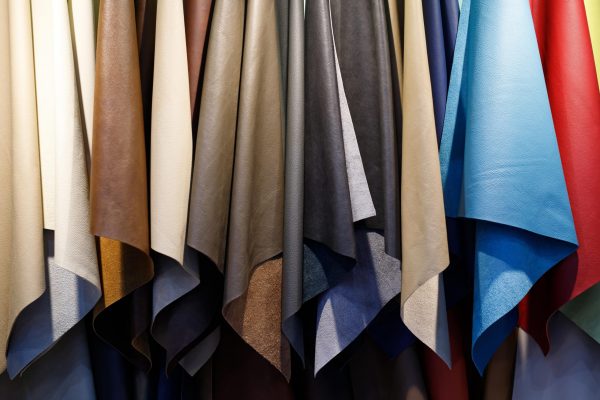
Wallets are a practical everyday item and fashion accessory that almost everyone owns, but have you ever thought about their environmental impact?
The vast majority of wallets and purses are made of leather and a common misconception is that since it is a natural, organic material, it is therefore better for the environment. This, however, is not the case.
Of all the materials used in fashion, animal fibres occupy four of the top five least environmentally friendly, with cow leather being the most damaging. In fact, cow-derived leather has almost three times the environmental impact as its synthetic alternatives.
Leather is, of course, a by-product of the meat and dairy industry which in itself is incredibly damaging to the environment. However, the impacts of leather do not stop there.
To become leather, hides are taken to a tannery where they are washed and treated to keep them the way they are. After this, they will then be taken to a leather factory.
Here, the hides are pressed and dyed by keeping them in big barrels filled with paint and other chemicals to make the colour stay.
Finally, they are dried, covered with a coating, and then dried again, a process that can be repeated several times. It is only then that the leather gets moved on to other factories where they are turned into a variety of products such as shoes, jackets, and, of course, wallets.
It’s not surprising that these processes, when taken altogether, produce a significant amount of greenhouse gas emissions. This is by far the most damaging environmental impact of the leather industry.

The chemicals used in the tanning process, including formaldehyde and coal tar derivatives, also cause more direct effects on the environment.
After usage, the wastewater containing these chemicals is often dumped in fields, rivers, or our oceans. This has been found to be a major contributor to marine eutrophication, harming animals and ecosystems living there.
Not only that, in some countries water from these polluted rivers is the main source of drinking water for the local population meaning it can have further disastrous effects on human health.
The use of resources needed to make leather is also worth noting, particularly water. It has even contributed to droughts and water shortages in certain countries.
While the E.U. has fairly stringent environmental laws, China, India, and Brazil are also major leather exporters with much weaker environmental protections.
The self-proclaimed “Leather City of the World, Kanpur, India, housed more than 10,00 tanneries in 2003 and, as a result, was dumping more than 22 tons of effluence into the Ganges River every day.
Like many fashion products, leather also has a human rights issue, exploiting workers and not adhering to safety regulations to make a profit.
There are huge amounts of research showing the negative health effects on tannery work. Research at a big tannery in Bangladesh, for example, showed that 90% of the workers didn’t reach the age of 50.
One study even found that people living near tanneries have a 20% to 50% higher chance of getting cancer.

The good news is that there is an ever-increasing amount of sustainable alternatives, and consumers can make a real difference by choosing to buy green.
Play it Green recommends Watson & Wolfe.
Their range of wallets, belts, and handbags are made without any animal-based components and avoid commonly-used processes that cause damage to people, ecosystems, and the environment.
Instead, Watson & Wolfe use corn leather, with most of their products made with at least 30% plant content. This is superior to most other ‘vegan leathers’ as it free from the chemicals often found in plastics.
Moreover, the corn used is a non-food crop meaning it doesn’t divert necessary resources away from food farms. Not only that, but the factory in Italy where it is produced is fully solar-powered, meaning the process is completely carbon neutral.
Thought is even put into the wallet linings. Traditionally, virgin polyester would be used, but instead Watson & Wolfe opt for rPET fabrics.
These are made from recycled, post-consumer plastic bottles, significantly reducing the output of waste water, energy, and CO2, and cutting down on the consumption of crude oil.
As well as helping you feel great and look great, Watson & Wolfe’s accessories are also practical, durable, and versatile.
To help you save some money on your order, you can use code PLAYITGREEN for 20% off.